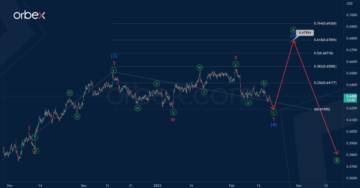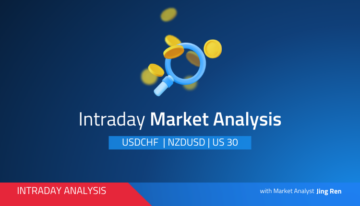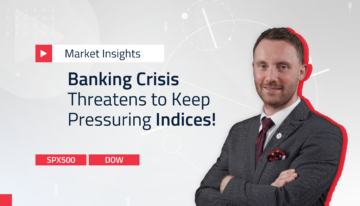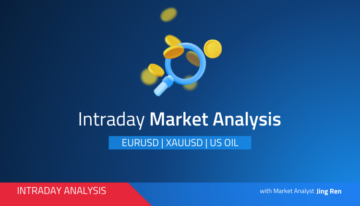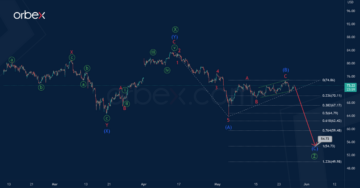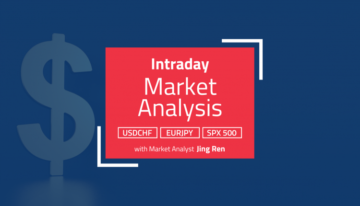The ECB is running into a problem that could end up significantly moving Euro pairs over the course of the coming months. It was slow to raise rates compared to other central banks. While it was more aggressive a few months ago, the ECB was barely keeping pace with the Fed.
Now, inflation is still relatively high, but coming down. The Fed is looking to wind down its rate hiking. The expectation would be that the ECB would keep on hiking for a few more months, in order to bring rates in line with other major central banks. If it started later, it would finish its rate hike cycle later. Especially considering that core inflation rose in June, in the most recent report.
Where the problem lies
The Euro Area narrowly avoided falling into a technical recession when Eurostat revised the final reading of GDP growth to flat for the first quarter. Raising interest rates is expected to slow the circulation of money. That’s one of the chief mechanisms it has for reducing prices. With the economy essentially flat-lining, any further increases in interest rates would be expected to push the economy into negative.
So, even though core inflation is almost tripling the target rate, the ECB is under increasing pressure to pump the brakes on the interest rate hikes. Even the erstwhile hawk representing Germany, ECB member Nagel, has admitted that after the next meeting, the ECB needs to be cautious about the data before moving to hike again.
What the outlook is
The markets are nearly universally in agreement that the ECB will hike by a quarter of a point at the next meeting. Therefore, all the attention is now focused on what it communicates about the next meeting in September.
What could really shake up the markets isn’t so much the ECB this time around, but the release of GDP numbers next Monday. It’s only the preliminary view, and subject to revisions (Q1 was first negative, indicating a recession; then revised out of a recession). But there is a growing view that Q2 GDP in the Euro Zone was again negative. This is after composite PMI fell into contraction and Manufacturing PMI is in the worst contraction since the pandemic.
Putting the breaks on the Euro
A negative Q2 wouldn’t mean a recession, again, based on a technicality. Since Q1 was flat, and it requires two quarters of negative growth to be a recession, Q2 in the red wouldn’t meet the technical definition. But the average of the last three quarters would still be negative. That would make it hard for the ECB to keep hiking for an extended period in the coming meetings.
The benchmark 10-year yield on German debt is lower than in the US, reflecting an expected recession in Europe that would force the ECB to cut rates next year. The markets are pricing in a higher chance of a recession in Europe than in the US at the moment – and there is still a majority of economists who think the US will see negative growth in the near term.
Until now, the market has been confident that the ECB would keep hiking. Unless the shared central bank provides a sufficiently confident tone about future rate hikes, the market could start moving to reflect that the terminal rate is here, and weigh on the Euro.
Trading the news requires access to extensive market research – and that’s what we do best.
- SEO Powered Content & PR Distribution. Get Amplified Today.
- PlatoData.Network Vertical Generative Ai. Empower Yourself. Access Here.
- PlatoAiStream. Web3 Intelligence. Knowledge Amplified. Access Here.
- PlatoESG. Automotive / EVs, Carbon, CleanTech, Energy, Environment, Solar, Waste Management. Access Here.
- BlockOffsets. Modernizing Environmental Offset Ownership. Access Here.
- Source: https://www.orbex.com/blog/en/2023/07/ecb-rate-decision-how-many-more-hikes
- :has
- :is
- $UP
- a
- About
- access
- admitted
- After
- again
- aggressive
- ago
- Agreement
- All
- an
- and
- any
- app
- ARE
- AREA
- around
- At
- attention
- average
- avoided
- Bank
- Banks
- based
- BE
- been
- before
- Benchmark
- BEST
- Blog
- breaks
- bring
- but
- by
- cautious
- central
- Central Bank
- Central Banks
- Chance
- chief
- Circulation
- coming
- compared
- confident
- considering
- contraction
- Core
- core inflation
- could
- course
- Cut
- cycle
- data
- Debt
- decision
- definition
- do
- down
- ECB
- ECB rate decision
- economists
- economy
- end
- especially
- essentially
- Ether (ETH)
- Euro
- Euro Zone
- Europe
- Even
- expectation
- expected
- extensive
- Falling
- Fed
- few
- final
- finish
- First
- flat
- focused
- For
- Force
- forex
- Forex Trading
- further
- future
- GDP
- gdp growth
- GDP numbers
- German
- Germany
- Growing
- Growth
- Hard
- Hawk
- here
- High
- higher
- Hike
- Hikes
- hiking
- How
- HTTPS
- if
- image
- in
- Increases
- increasing
- indicating
- inflation
- interest
- INTEREST RATE
- INTEREST RATE HIKES
- Interest Rates
- into
- IT
- ITS
- june
- Keep
- keeping
- Last
- later
- Line
- live
- looking
- lower
- major
- Majority
- make
- manufacturing
- many
- Market
- market research
- Markets
- mean
- mechanisms
- Meet
- meeting
- meetings
- member
- Mobile
- Mobile app
- moment
- Monday
- money
- months
- more
- most
- moving
- much
- Near
- nearly
- needs
- negative
- news
- next
- now
- numbers
- of
- on
- ONE
- only
- order
- Other
- out
- Outlook
- over
- Pace
- pairs
- pandemic
- period
- plato
- Plato Data Intelligence
- PlatoData
- pmi
- Point
- pressure
- Prices
- pricing
- Problem
- provides
- pump
- Push
- Q1
- Q2
- Quarter
- raise
- raising
- Rate
- Rate Hike
- rate hikes
- Rates
- Reading
- really
- recent
- recession
- Red
- reducing
- reflect
- relatively
- release
- report
- representing
- requires
- research
- revisions
- ROSE
- running
- s
- see
- September
- shared
- significantly
- since
- slow
- So
- start
- started
- Still
- subject
- Target
- Technical
- term
- Terminal
- than
- that
- The
- the Fed
- then
- There.
- Think
- this
- though?
- three
- time
- to
- TONE
- Trading
- tripling
- two
- under
- universally
- URL
- us
- View
- was
- we
- weigh
- What
- when
- while
- WHO
- will
- wind
- with
- Worst
- would
- year
- Yield
- zephyrnet


